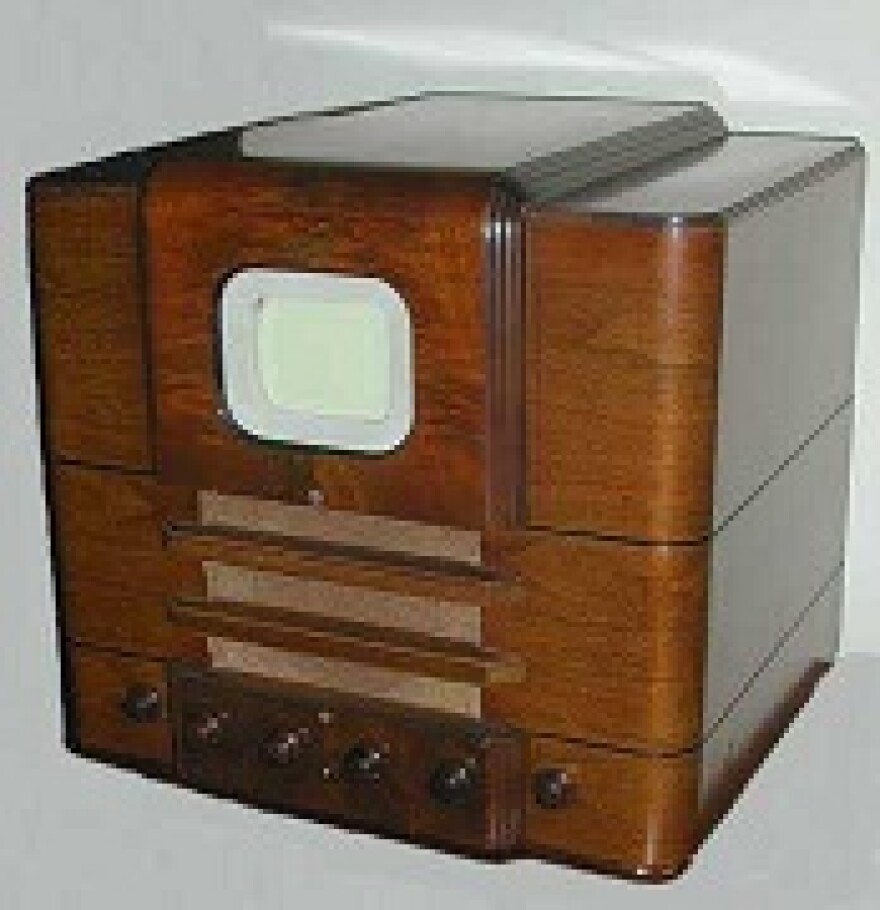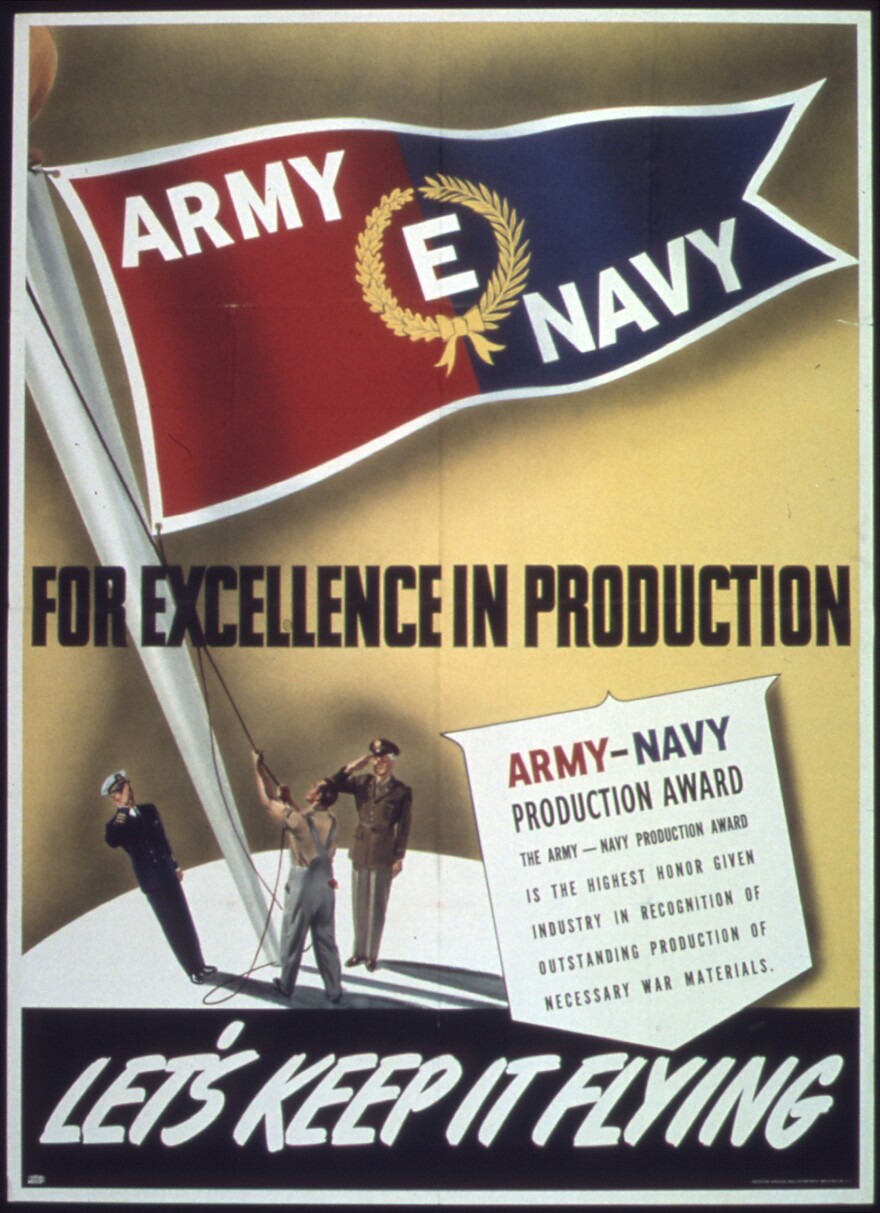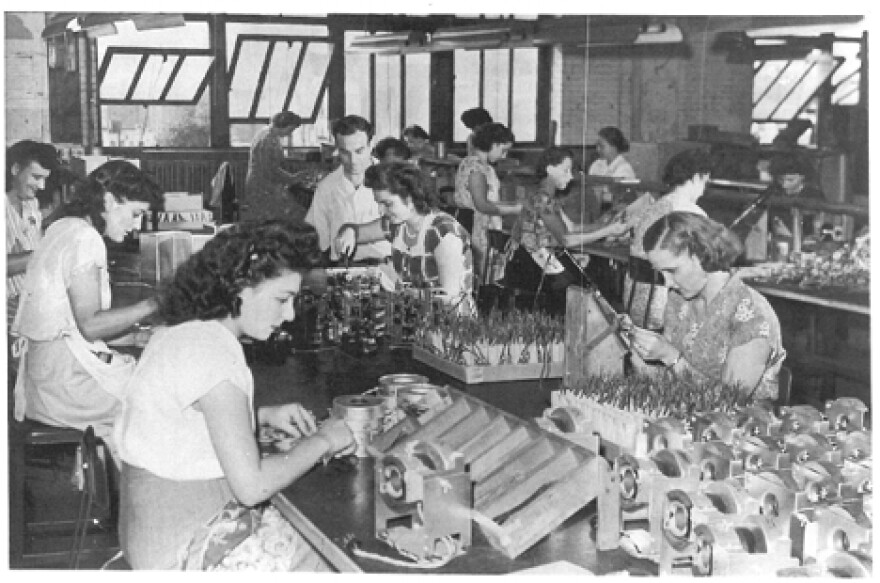When I decided to write about Frank Andrea, I thought that like Atwater Kent, David Sarnoff, Edwin Armstrong and others, that the research involved would be a cake walk, given his success in the radio business and his involvement in early television. But alas, Frank would at first prove to be more of a challenge. Online information about him was basic and sparse and I found that a lot of it contained at least some inaccuracies. Since he had established radio factories on Long Island, the local connection to the WSHU listening area makes the story even more interesting. My research eventually led me to the Andrea Electronics Corporation, where Frank’s grandson is currently president and CEO.
Mr. Andrea was born in Sacco, Italy, in 1888 to Francesco and Philomina Andrea. In 1890, at the age of 2, Andrea came to the U.S. with his widowed mother (When they arrived, the family changed its name from D'Andrea to Andrea in order to sound less ethnic. Readers may come across his name as Andrea, D'Andrea or Frank A.D. Andrea.) Andrea attended public school until age 11, when he left to become a newsboy to help support his mother. He also worked for the Denis Trunk Repair Shop. He studied nights to become a tool and die maker at the Machinist’s Institute of NYC. He was also a featherweight boxer as a teenager.
In an early job as a machinist, Frank met Guglielmo Marconi and made some custom parts for one of his early radio sets. Marconi was impressed by Frank’s work and in return sent him several of his books about wireless technology. His further interest in radio grew out of an early job with the Frederick Pierce Co., a company that did experimental work for inventors. Later, in 1917, he worked as plant manager for Lee de Forest, manufacturing vacuum tubes (1, 2).
Sometime around 1920, Frank went into business with his 16-year-old half-brother, John (3). The company name, FADA, was based on his initials. His first product was a crystal detector, a device used by both crystal radios and by some early tube sets. Within a year of station KDKA’s first broadcasts, the FADA company could not produce the crystal detectors fast enough to keep up with demand. He expanded to the point of renting space in three buildings on Jerome Avenue in the Bronx.
One trait that Frank Andrea was exceptionally good at was foreseeing technology trends and future markets. He recognized that de Forest’s vacuum tubes would soon make crystal radio sets obsolete. By 1923, the company began producing its first complete tube radio sets. These sets were built using the Neutrodyne circuit, an improved version of the Tuned Radio Frequency circuit, licensed from the Hazeltine Corporation. The radios were well received by the public and sales were good. By 1926, the company is said to have produced close to 300,000 radios (4, 5). In 1925, Mr. Andrea organized FADA Radio LTD of Canada and FADA Radio LTD of England to manufacture and market the sets in those countries.
The driving force, as Frank was known to say, “was to get rich.” A goal that he was well on his way to achieving, but at a cost.
Apparently, working conditions in his factory were poor and employee relationships were less than stellar. In 1926, 500 of his 600 employees went on strike. A year later Lewis Clement, the company’s chief engineer left for a job at the Crosley Radio Company (4). Shortly thereafter, his chief operations officer Dick Klein also fell into disagreement with Frank Andrea and left (6). Despite setbacks, Frank was able to keep the company going and profitable. In 1928 he was one of the top five radio manufacturer in the U.S.

After the market crash of 1929 and the depression that followed, and having achieved his goal of getting rich, Frank Andrea sold the company to a group described as “Boston investors” in 1932, in order to take an early retirement. FADA, without him, did not fare so well; it went bankrupt in 1934. It would flounder and eventually, a group of New York investors revived it. Reincorporated as the FADA Radio and Electric Co. and relocated to Long Island, N.Y., the company had a period of success in the late 1930s through the start of WWII.
Looking back after he sold FADA in 1932, within two years, Frank Andrea decided that retirement was not for him. By 1934 he had incorporated the Andrea Radio Corporation. With FADA in bankruptcy, Frank was able to hire back a number of key employees (7). By 1935 his first new model, the 1A5 (8) was in production. I was able to find schematics and service information for the set, but no useable pictures from museums, private collections or other sources. It was an “All American Five” circuit with a pentagrid converter, and featured both broadcast and shortwave.

Andrea went on to manufacture a successful line of radios leading up to WWII, targeting both the consumer and amateur radio markets (2). By 1936 he again saw the writing on the wall with this new television technology phenomenon. RCA, in conjunction with NBC, demonstrated a private experimental broadcast to company executives in 1936. The Andrea Company began developing a consumer TV, closely watching the RCA effort to put the first experimental TV station on the air in New York City. Mr. Andrea was determined to be ready for this.

By 1939 he introduced the first commercially available TV, the model 1F5, at the New York World’s Fair, coinciding with RCA’s announcement that it had begun its experimental broadcasts. The TV had a three-inch black and white screen. In keeping with some of his previous radio products, it was also offered in kit form, making it more affordable to many.
When WWII put a hold on further TV development and stopped the production of consumer electronics, the Andrea Radio Corp. developed a line of avionics intercom systems sold to Boeing, Lockheed Martin, and other government contractors for the war effort. Andrea Radio was awarded the Army-Navy “E” Award for WWII supplier excellence (1,9).

Post-war, they resumed consumer production with an emphasis on TV technology. The company also received a substantial contract to produce radios under the Philips name for the European market as all of the Philips manufacturing facilities were destroyed during the war (1).

Frank was joined by his son Frank, Jr. and daughter Camille in running the company. The company produced a line of high end televisions considered back then and by collectors today to be the “Cadillac” of early TV sets (4). The company heavily promoted the concept of the home entertainment console, a unit that combined a TV with a radio and often a phonograph.
In 1954, after RCA released the first consumer color TV, the CT-100, Andrea began an effort to develop its own color set. It was released in 1957. Even at this time, only a handful of programs were broadcast in color.

The Andrea Radio Corporation did not abandon its development of military electronics after WWII, and was beginning to lean more in that direction, even as it continued to grow its consumer line of products. In addition to continuing the development of aircraft intercommunication systems, the company would produce the guidance system for the first guided missile successfully launched by the U.S. Later they would develop the communications system for the Mercury space capsule program.

Frank Andrea, Jr. was made president of the company in 1964, with Camille serving as director of PR and advertising. Frank, Sr. died on December 22, 1965. He was 77-years-old.
The company today.
The company continued to produce TVs, radios and other consumer electronics until the late 1970s. It spun off its military avionic intercom business in 2003 and its computer headset business in 2015. Now owned by another company, both continue to operate under the Andrea brand name, Andrea Systems and Andrea Communications, respectively.
Except for a brief period between 2001 and 2005, the Andrea Electronics Corporation has been continuously headed by a member of the Andrea family, with Douglas Andrea, the founder’s grandson, now president and CEO. The company, which is still headquartered on Long Island, played a role in developing computer sound systems for Dell, HP and other major computer manufacturers. Today the Andrea Electronics Corporation develops and manufactures digital array microphones and noise reduction software products for advanced communication systems and speech recognition applications.
Special thanks to Mr. Douglas Andrea for taking the time to answer my questions and providing a variety of information and pictures from his grandfather’s business.
References
1. Douglas Andrea, Grandson.
2. National Encyclopedia of American Biography.
3. New York Post, Dec. 6, 1962.
4. Frank Andrea, Radio and TV Pioneer, Radio and Television News, May 1950, Arthur Pine.
5. Radiomuseum.org.
6. http://classicradiogallery.com/fada_history.html. Note: Some FADA information on this web site is inaccurate. The parts I have quoted have been confirmed by at least one other independent source.
7. http://www.andreaelectronics.com/wp-content/uploads/2015/07/Distant-Sparks.pdf.
8. 1A5 as the first Andrea model is unconfirmed, but is based on the first appearance of schematic and service information that I could locate in Rider’s and NRI service compilations.
9. Electronics, April 1945.


